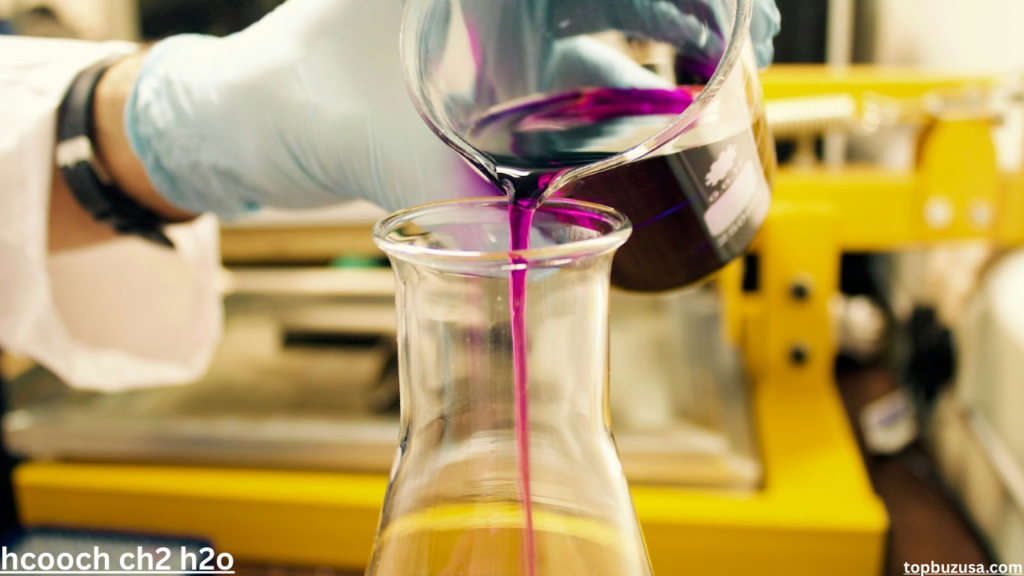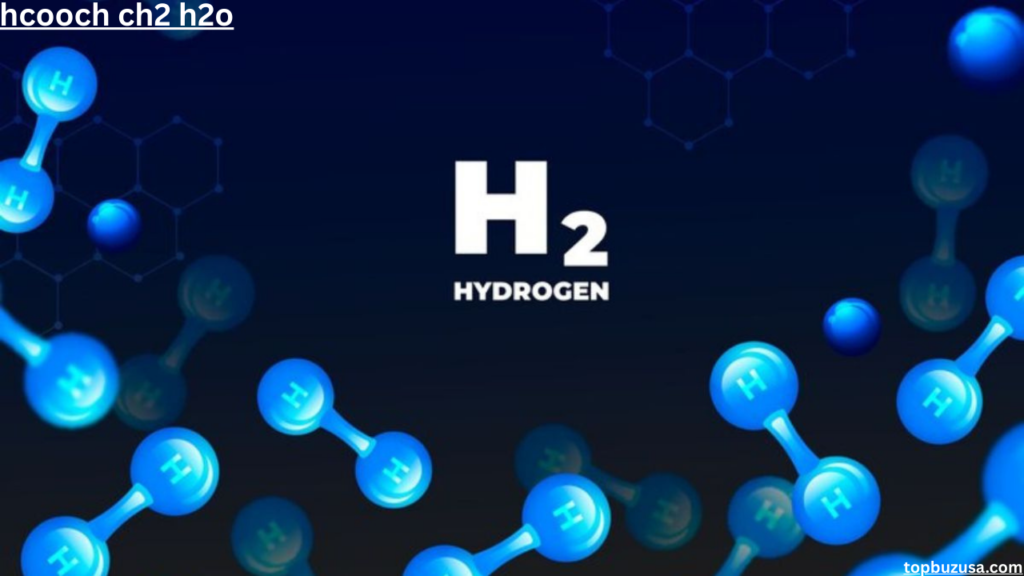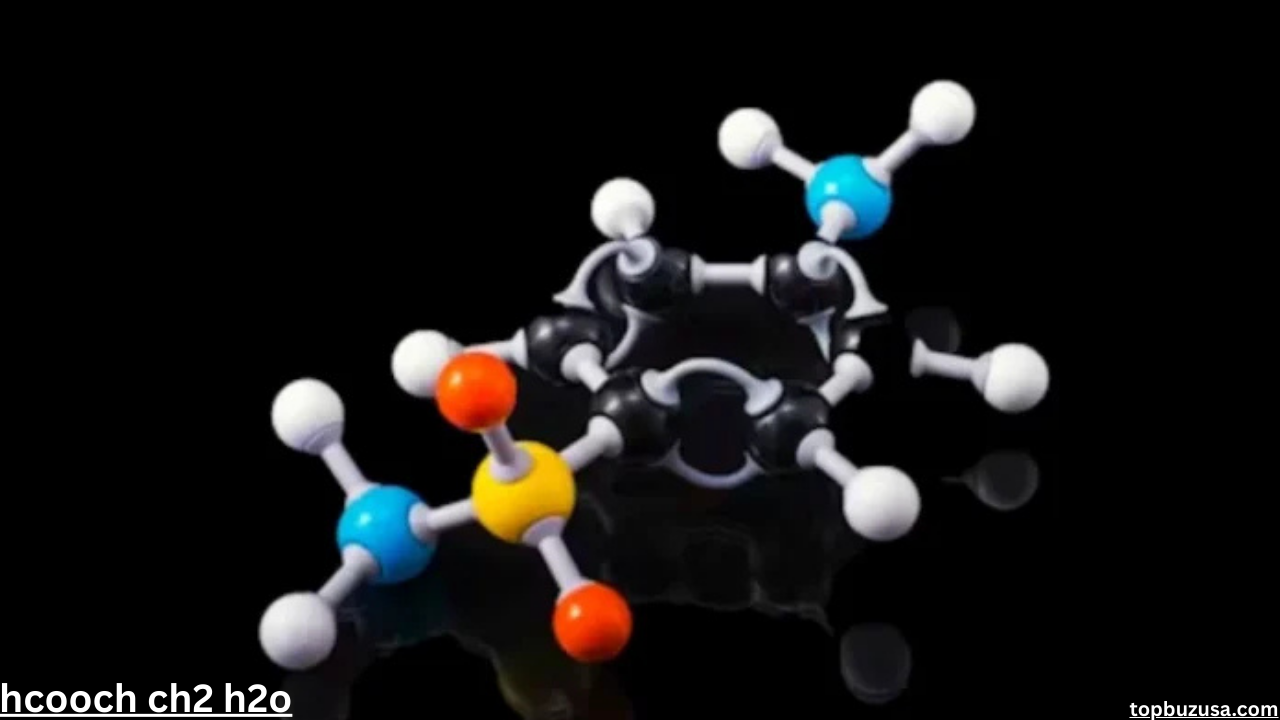In the realm of organic chemistry, simple molecular structures often hold immense potential in shaping complex reactions and large-scale industrial applications. Among such compounds, HCOOCH (methyl formate), CH₂ (methylene), and HCOOCH CH₂ H₂O (water) stand out for their distinctive roles in synthesis, catalysis, and environmental chemistry. These molecules may appear unrelated at first glance, but they often interact in reaction mechanisms fundamental to both research and manufacturing.
HCOOCH, or methyl formate, is a volatile ester with unique physical and chemical properties that make it useful across multiple industries. CH₂, typically represented as a carbene, is one of the most reactive intermediates in organic chemistry, crucial for building molecular complexity. Meanwhile, water—H₂O—remains the universal solvent and a central player in countless chemical processes, from hydrolysis to catalytic cycles.
This article will explore the structures, behaviors, and significance of HCOOCH, CH₂, and H₂O. We’ll look at their individual chemical profiles, their reactions—particularly ester hydrolysis—and their critical applications in industrial and laboratory settings. Whether you’re a chemistry student, an industry professional, or a curious reader, this guide will offer a comprehensive understanding of these essential compounds.
Understanding the Chemical Structures and Properties
HCOOCH (Methyl Formate)

HCOOCH CH₂ H₂O, known formally as methyl formate, is the simplest ester derived from formic acid and methanol. Structurally, it consists of a formyl group (HCO-) bonded to a methoxy group (–OCH₃). This small molecule has a linear, polar arrangement, giving it moderate solubility in water and excellent solubility in organic solvents like alcohols and ethers.
Its physical properties are especially important in industrial applications. Methyl formate is a colorless, highly flammable liquid with a boiling point around 31.5°C. This low boiling point makes it ideal as a fast-evaporating solvent. In manufacturing, it’s used in the production of formamide, as a blowing agent for polyurethane foams, and as a key intermediate in agrochemical synthesis.
Chemically, methyl formate is reactive toward both acids and bases, readily undergoing hydrolysis to yield methanol and formic acid. This reactivity, combined with low toxicity and biodegradable nature, has positioned HCOOCH as a valuable compound in both synthetic organic chemistry and environmentally conscious industrial processes.
CH₂ (Methylene)
CH₂, or methylene, is often found as a carbene—one of the most fascinating and reactive intermediates in organic chemistry. Carbenes are species where a carbon atom has two non-bonded electrons and only six electrons in its valence shell. CH₂ exists in two electronic configurations: singlet and triplet. In the singlet state, the electrons are paired, while in the triplet state, they are unpaired and more reactive.
Due to this electronic structure, CH₂ is highly unstable and cannot be isolated under normal conditions. However, it can be generated in situ through photolysis or thermolysis of precursors such as diazomethane or diiodomethane. Once formed, methylene can participate in a variety of reactions, including cyclopropanation, C-H insertion, and rearrangement reactions.
Despite its instability, CH₂ is incredibly valuable in synthesis. It enables the formation of strained ring systems and complex frameworks used in pharmaceuticals, agrochemicals, and materials science. Scientists are also exploring methods to stabilize and harness CH₂ in metal-carbene complexes, expanding its usability in catalytic systems.
H₂O (Water)
Water, HCOOCH CH₂ H₂O, is more than just a life-sustaining liquid—it is a central actor in countless chemical reactions. Each molecule features two hydrogen atoms covalently bonded to an oxygen atom in a bent molecular shape. This geometry leads to significant polarity and the capacity for extensive hydrogen bonding, which gives water its high boiling point, surface tension, and solvent power.
In the chemical context, water serves multiple roles. It is a universal solvent, a reactant in hydrolysis, a product in condensation, and a medium for proton transfer reactions. Its high dielectric constant helps dissociate ionic compounds, making it indispensable for acid-base chemistry and electrochemistry. Furthermore, water stabilizes charged intermediates and can act as a ligand in coordination chemistry.
In both nature and industry, water’s role is irreplaceable. It not only facilitates essential biochemical reactions but also drives industrial processes like hydrolysis of esters, steam reforming, and biomass conversion. With increasing focus on sustainable chemistry, water’s non-toxic and renewable nature has renewed its status as a preferred solvent in green chemistry applications.
Chemical Interactions and Reactions Involving HCOOCH CH₂ H₂O
Hydrolysis of Methyl Formate with Water

One of the most well-known reactions involving methyl formate is its acid- or base-catalyzed hydrolysis in water. This reaction breaks the ester bond, yielding formic acid and methanol. The mechanism involves nucleophilic attack by water on the carbonyl carbon of the ester, followed by proton transfers and cleavage of the C–O bond.
This hydrolysis is not just academically important—it has large-scale industrial relevance. For instance, formic acid, the product of hydrolysis, is a useful preservative, antibacterial agent, and reducing agent. Methanol is a key feedstock in plastics and fuels. The simplicity and efficiency of this reaction make it a model transformation in both undergraduate labs and chemical manufacturing plants.
Moreover, this reaction highlights water’s dual nature as both solvent and reactant. Without water, this hydrolysis would not occur, demonstrating its indispensable role in organic transformations.
Role of CH₂ in Synthetic Reactions
HCOOCH CH₂ H₂O, as a carbene, participates in a range of valuable synthetic reactions. One of the most common is cyclopropanation, where CH₂ reacts with alkenes to form three-membered cyclopropane rings. These rings are common structures in pharmaceuticals, flavoring agents, and bioactive molecules.
CH₂ also plays a role in C–H insertion reactions, where it inserts itself into existing carbon-hydrogen bonds, effectively altering the molecular structure and allowing for further functionalization. Such transformations are essential in total synthesis, where complex molecules are built from simpler precursors.
Because of its reactivity, CH₂ must be handled with precision. Chemists often employ metal catalysts, such as rhodium or copper complexes, to control its behavior. These techniques allow for greater selectivity and yield, making CH₂ a powerful tool in modern synthetic chemistry.
Industrial and Environmental Applications
Methyl formate is used extensively in industrial applications. Its volatility makes it an ideal blowing agent for foams used in construction and insulation. Additionally, it acts as an intermediate in the production of formamide and dimethylformamide—solvents crucial to textile and chemical industries. Thanks to its low toxicity and rapid degradation in the environment, HCOOCH is often considered an eco-friendlier alternative to more persistent solvents.
CH₂, although less directly used in bulk industries, is pivotal in research and pharmaceutical synthesis. Its involvement in complex molecule formation means it plays a quiet but essential role in drug development and organic synthesis. Advancements in organometallic chemistry continue to push the boundaries of how CH₂ is utilized, especially in tandem with catalysts for targeted reactions.
Water remains at the heart of nearly all chemical and biological industries. From hydrolysis and extraction to electrolysis and cooling, its roles are multifaceted. In green chemistry, water is increasingly used as a reaction medium to replace toxic organic solvents. Furthermore, its role in environmental remediation—such as removing pollutants via aqueous-phase reactions—cements its importance in sustainable practices.
Conclusion
The chemical trio of HCOOCH CH₂ H₂O demonstrates the elegant complexity of molecular interactions. Each plays a unique role—methyl formate as a reactive ester, methylene as a reactive intermediate, and water as both medium and participant in reactions. When these compounds come together, they highlight essential principles of hydrolysis, catalysis, and green chemistry.
In industrial settings, HCOOCH contributes to environmentally conscious manufacturing. CH₂ drives innovation in pharmaceutical and organic synthesis. And H₂O remains the cornerstone of sustainable chemical processes. By understanding these molecules’ properties and applications, we gain deeper insight into how chemistry shapes our modern world.
FAQs
What is HCOOCH CH₂ H₂O used for?
It’s used as a solvent, blowing agent for foams, and a precursor in the synthesis of formamide and pesticides.
How is CH₂ (methylene) generated?
CH₂ is generated through decomposition of diazo compounds, photolysis of diiodomethane, or catalytic processes in lab settings.
Can water hydrolyze esters like HCOOCH?
Yes, water hydrolyzes esters under acidic or basic conditions to produce alcohols and acids.
What are the industrial uses of water in this context?
Water is used for ester hydrolysis, cooling, extraction, steam reforming, and as a green solvent.
Are there safety concerns with CH₂?
Yes, due to its high reactivity, CH₂ must be generated in controlled environments using proper safety protocols.
You May Also Read: https://topbuzusa.com/rub-ranking/





